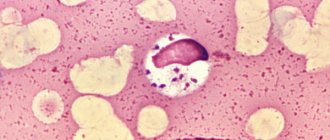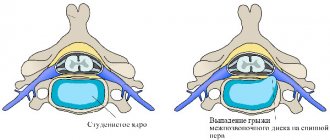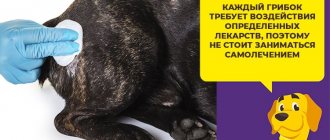Respiratory system of dogs
The dog's respiratory system is complex and consists of several parts, including the lungs and airways (larynx, trachea, nasal cavity and oral cavity). Diseases in any part of this system can cause rapid breathing in dogs.
Heavy breathing is called dyspnea, increased inspiratory amplitude is called hyperpnea, and excessively rapid breathing is called tachypnea.
Increased breathing can occur in dogs of any breed or age, but they are especially common in breeds with a flattened muzzle, narrow nostrils and an elongated soft palate, soft tracheal walls:
- French bulldogs and pugs.
- some of the toy breeds include Yorkshire terriers and Chihuahuas, as they are the most likely to suffer from hyperventilation problems.
How to help an animal with tachypnea?
Before providing assistance to a pet, it is necessary to exclude physiological factors that provoke tachypnea:
- Most often, you just need to wait until the animal adapts to new conditions, takes a break from physical activity or medical procedures, and time passes after administering medications or eating food.
- If rapid breathing accompanies the birth process, you also just need to wait for the time during which the animal regains strength and frequency of respiratory movements after birth.
- Also, rapid breathing after a walk recovers on its own, some time after returning.
- Sometimes you can observe an increase in the respiratory rhythm during sleep. Most often, there is no reason to worry - animals are also emotional and some excitement may be observed during sleep, literally dreaming.
- However, rapid breathing during periods of rest can also indicate heart failure.
If you breathe faster after vaccination
An increase in heart rate may also occur after vaccination. If the dog begins to breathe quickly immediately after vaccination, then the development of an allergic reaction and anaphylactic shock must be ruled out. The condition may be accompanied by convulsions, vomiting, and loss of consciousness. It is for these purposes that after vaccinations they should be under the supervision of a veterinarian for 20-30 minutes. The main help is anti-shock therapy.
Tachypnea, which appears a few hours after vaccination and levels off within 24 hours, indicates the work of the vaccine and the response of the immune system. In this case, a high breathing rate may be accompanied by a refusal to eat, some lethargy, upset stool, and an increase in overall body temperature. The main thing is that these symptoms go away within 24 hours. Pet owners can provide symptomatic care to their pets to alleviate their condition or arrange for help from a doctor if symptoms persist for a long time.
Overheating of the animal
The owner can provide specific assistance to the dog in case of overheating and heat stroke, when lethargy and rapid breathing are observed.
- The animal is placed in a cool place,
- if necessary, wrapped in a wet towel or cloth,
- drink water at room temperature and
- if necessary, taken to a veterinarian (or a doctor is called to the house).
After anesthesia
Rapid breathing after anesthesia may indicate two main reasons:
- pain syndrome or
- anesthesia intoxication.
If, in case of pain, the owner can give the animal an anesthetic, previously prescribed by a veterinarian, at home, then in case of intoxication with anesthesia, only a veterinarian can help. If the respiratory rhythm does not level out as the animal recovers from anesthesia, you should get to the veterinary hospital as quickly as possible.
Rapid breathing after sterilization can be an important diagnostic sign. In addition to pain or anesthesia intoxication, this may indicate problems with the dog’s cardiovascular or respiratory systems. This may be one of the signs of heart failure or postoperative pulmonary edema, and the owner will not be able to help the animal within the walls of the house.
When a dog is pregnant
Frequent breathing in a dog during pregnancy can be a harbinger of an imminent birth. Before giving birth, the condition of animals changes from a feeling of chills to a feeling of heat. At the moment when the animal is hot, dogs begin to breathe quickly - most often with an open mouth and protruding tongue. At the same time, the heart rate increases.
If such a condition is observed at the expected time of delivery, then there is no reason to worry - this is a physiologically justified increase in the respiratory rhythm. You just have to watch the process. If breathing becomes more frequent long before the due date, this is a reason to seek help from a veterinarian to prevent a possible miscarriage.
Additional symptoms
In cases where tachypnea persists for a long time and/or is accompanied by additional symptoms:
- dyspnea,
- elevated temperature,
- cardiopalmus,
- pain syndrome, etc.
It is necessary to contact a veterinarian as soon as possible. A non-specialist will not be able to make an accurate diagnosis due to the large number of possible diseases, and self-medication can have unpleasant consequences. The best help for the animal owner in this case will be the most detailed description of the symptoms accompanying tachypnea and the time intervals for their appearance and development. The danger of any changes in breathing lies in deviations in blood composition, which in some cases can lead to the death of the pet.
Common Causes of Increased Breathing Rate in Dogs
- Infection (bacterial, viral, parasitic)
- Injury
- Bleeding
- Foreign objects in the respiratory tract
- Structural abnormality (eg, elongated soft palate)
- Heart failure
- Compression of the neck area, massive tumors
- Tracheal injury
- Anemia
- Allergies
- Pain
- Heat
- Diseases that are accompanied by an increase in abdominal volume (acute gastric dilatation, flatulence, ascites, massive neoplasms in the abdominal cavity)
- Medications
- Tumors
- Lung diseases (pneumonia, neoplasia, bronchitis, hemorrhage, thromboembolism, torsion of the lung lobe)
- Diseases of the pleura (pneumothorax, pleurisy, hydrothorax, chylothorax)
- Dirofilariasis
It can be difficult to determine whether your dog is breathing normally or not. Healthy dogs typically breathe at a rate of 20 to 35 breaths per minute, and their breathing should never be labored. If in doubt, contact your veterinarian or your nearest clinic.
Is my dog hyperventilating?
Rapid breathing in dogs can be caused by excitement or physical exertion. Dogs may also hyperventilate when they are afraid, stressed, or hot. Rapid breathing is one of the most important ways a dog can thermoregulate.
But be careful, rapid breathing is an early sign of heatstroke and should be carefully monitored at the appropriate time of year. If you are concerned that your dog has heatstroke, read the articles on our website.
Causes and symptoms of rapid and heavy breathing
The dog's breathing becomes faster after intense physical activity, such as long runs and the like. It can also occur at very hot temperatures (the breathing rate can increase to one hundred and sixty breaths per minute). And breathing becomes more frequent when the pet is overexcited. Anxious dogs with an unstable nervous system may also breathe faster.
But all these phenomena are normal. But if the dog is breathing frequently and at the same time her breathing is rapid, and she herself is not very active or is generally absolutely calm, there may be problems. Just watch your pet. When a dog is healthy in a calm environment, it does not open its mouth when it breathes and does not make any sounds when breathing (this is, of course, unless it has a special muzzle structure, such as pugs, which can not only snore, but also snore).
When an animal's breathing quickens, its behavior also changes. Some symptoms may appear, such as:
- trembling or restless behavior;
- cough, hoarseness and shortness of breath;
- blue gums;
- refusal to eat;
- diarrhea or vomiting.
But if a dog has rapid breathing, heartbeat and, moreover, trembling, it is extremely difficult and even almost impossible to notice. If the animal is disoriented, it may have suffered heatstroke. In this case, he should be taken to the coolest place, given something to drink, and a damp towel placed on his head.
Read Euthanasia of dogs in a veterinary clinic or yourself at home
If your dog's tongue turns blue or he faints, then most likely he has heart problems. Then the pet needs to be well covered and a warm heating pad placed on its paws. After this, call a veterinarian to your home and, while waiting, administer Cordiamine intramuscularly.
If all the symptoms mentioned above are present, then this is already a serious reason to worry. In such a situation, visit an experienced specialist as soon as possible and do not delay your visit under any circumstances. But other indicators can also cause rapid breathing, and we will now consider which ones in more detail.
Diseases
The cause of strange breathing in a dog can be a serious illness, pathology or dangerous incident. Let's look at the most basic of them.
Laryngospasm (swelling of the larynx). Occurs due to allergic reactions or if a foreign object gets into the pet’s throat. In such a situation, the animal wheezes and may even choke. In addition, his mucous membranes turn very blue. During the diagnosis, an anamnesis, sedation with examination of the larynx, and, if necessary, an x-ray are performed. Laryngospasm is treated with special medications, but in more rare cases, the veterinarian may prescribe artificial ventilation. Usually this disease goes away easily and without any complications.
Tracheal collapse. This disease is very common in dogs. During it, the trachea becomes deformed, becoming thicker and preventing normal air circulation during inhalation and exhalation. This manifestation is typical for dogs such as:
- Chihuahua;
- terriers;
- Spitz and other decorative specimens.
Initially, this disease is difficult to recognize, since the first symptoms that appear may mean that the dog’s collar is tightened tightly and that is why the dog is breathing heavily and occasionally coughing. Over time, as the disease gains strength, it develops additional symptoms, such as:
- dyspnea;
- increased cough;
- wheezing;
- Even short-term loss of consciousness is possible.
In order to prescribe the correct treatment, it is necessary to do an x-ray and bronchoscopy of your pet. During treatment, the dog needs complete rest, and if the disease progresses, surgery will be necessary. Practice shows that basic treatment takes place without any complications and the pet recovers very quickly.
If you notice that your dog has swallowed something and is unable to breathe, there may be an object stuck in his airway. To verify this and prescribe appropriate treatment, you must first do an x-ray and bronchoscopy. Treatment will directly be based on removing the latter from the animal’s mouth. Whether further action needs to be taken depends on the extent and consequences of the case.
The wheezing your pet makes may mean that a tumor has formed in the airway, which can be either malignant or benign. The disease may also be accompanied by the following symptoms:
- dyspnea;
- noisy breathing;
- persistent cough, possibly blood in the sputum.
To exclude or refute this suspicion, it is necessary to take an x-ray, and in some cases, a biopsy and tomogram of your pet’s trachea and nose. For treatment, the dog is prescribed a course of chemotherapy or thoracotomy. There is a chance of recovery, but it all depends on the animal itself.
Read Causes of diarrhea in puppies: what to do at home
Bronchitis, pneumonia. This disease is accompanied by a persistent cough, wheezing and severe shortness of breath, which worsens at night. Many people believe that this disease is quite rare in dogs, but this is absolutely not true. They suffer from these diseases very often. Before starting treatment, it is necessary to undergo tests and take x-rays. Sometimes it is necessary to do an additional study - a bronchoscopy. For treatment, your pet is prescribed antibiotics, cough suppressants, antipyretics, etc. With proper treatment, the animal recovers quite quickly.
Pulmonary edema. This disease occurs due to the fact that part of the blood, sweating, accumulates in the lungs. Edema is accompanied by cinosis of the mucous membranes and shortness of breath. Here you also need to undergo an x-ray examination. For treatment, decongestants are prescribed. Sometimes, to alleviate the animal’s condition, artificial ventilation is prescribed. After the dog recovers, the doctor needs to determine the cause of the swelling to avoid relapse. This could be either a simple infection or heart failure. Once it is established, treatment begins that neutralizes it.
Heart disease. Oddly enough, this disease is characteristic not only of older animals or those suffering from excess weight, but also of young animals. If your puppy's breathing rate is high, she may have a congenital heart defect or indicate heart failure. After examining your pet, the doctor will prescribe appropriate treatment.
In any case, if you notice that something has changed in the dog’s behavior, do not be lazy, go to the veterinarian, because this may mean that he is ill, and the sooner you contact a specialist, the greater the chance that he will get better faster.
Physiology
In many cases, rapid breathing does not mean that the animal is sick; other reasons are possible. One of them is its physiology. For example, she is hot, because in this case the dog’s pulse increases to one hundred and sixty beats per minute, and the dog breathes through its mouth.
Also, such heart palpitations are possible after active activities, such as games, fast running or other physical activity. If the pet is alarmed or excited about something, then its breathing may also change and in most cases they breathe with their mouth open
Don’t panic right away, but watch the animal a little; if after a short time the abdominal breathing returns to normal, then everything is fine with it, and if the frequency does not decrease, but rather increases, then go to the veterinary clinic.
Breed Features
In some cases, rapid breathing is the norm, as it is inherent in a given breed of dog, such as Labrador, Spitz, etc. Let's look at some of them.
The Shih Tzu has a flat face, and that is why it breathes differently in different cases, for example:
- Snort. Appears during exhalation when there is discharge in the nose.
- Reverse sneezing is a hum-like sound. They are the norm.
Read Signs and treatment of cystitis in dogs at home
Another representative of unusual breathing is the pug. They have a rather short palate, which makes their breathing difficult. Because of this feature, they may snore during sleep.
The Spitz is a representative of a certain type of cough. Due to the peculiar structure of the larynx, the closedness of the cartilaginous tissues, during stressful situations, as well as illness, they develop a cough and their breathing changes, it becomes peculiar, it seems to us that the animal is sneezing, but this is not the case.
Pekingese have a very short nasal passage, which makes breathing difficult for them. Due to the peculiar structure of the larynx, a dog may stop breathing during sleep, so it is not advisable for the dog to sleep on its back. In addition, the animal often snores during sleep.
In a pregnant dog
During pregnancy, a dog may also experience difficulty breathing, especially before giving birth, so if the animal’s breathing is heavy later in pregnancy, then there is no need to worry. If nothing has changed after delivery and the puppies do not survive, you should immediately contact a veterinarian. If you notice that a nursing dog, in addition to rapid breathing, walks awkwardly, it means that the level of calcium and glucose in its blood has decreased. To prevent the animal from suffering further, you should also consult a doctor.
After vaccination
Rapid, intermittent breathing after vaccination indicates that immunity has worked. Also possible here: loss of appetite, low activity, and even fever. Everything returns to normal within 24 hours, but if this does not happen, you need to go to the veterinary clinic.
Also, if immediately after the vaccination, ten minutes later, your pet is breathing in jerks, you need to make sure that it is an allergy, otherwise the dog may die. Therefore, do not rush to leave the clinic, stay for about thirty minutes under the supervision of a doctor.
Recognizing Abnormally High Breathing in Dogs
Your dog may show signs of drooling excessively and look like he is choking or stressed. She may also make loud breathing sounds such as snorting or grunting.
Another common sign of abnormal breathing is when your dog is panting heavily or rapidly, but is not hot or exercising. Heavy and rapid breathing in dogs should be of particular concern if their mouth is wide open and/or you can see their nostrils moving.
Dogs with rapid breathing and respiratory distress
They will also sometimes assume a forced standing posture or lie with their neck extended and elbows wide out to the sides - and they may become stressed if you try to interact with them. Check to see if their sides and belly are moving more noticeably and/or faster than usual, and pay special attention to the color of their tongue and gums. If they are an unusual color, especially if there is a bluish or blue-purple tint, contact your veterinarian immediately.
Difficult or rapid breathing in dogs is known as panting, while excessively rapid breathing is called tachypnea. Are you concerned about your dog's rapid breathing? Find your nearest clinic for immediate treatment.
Causes of increased respiratory movements in dogs
Difficulty or rapid breathing, often called shortness of breath. This symptom may indicate insufficient oxygen in the bloodstream and is a life-threatening condition requiring emergency treatment.
The causes of rapid breathing in dogs are varied.
One of the most common in older animals is fluid accumulation in the lungs (heart failure) or chest cavity (a variety of causes). Pulmonary edema in dogs is often associated with heart and lung disease. Other less common causes of wheezing in dogs include foreign objects, lung cancer, infections such as pneumonia, chest wall injuries, kennel cough and allergies. Other diseases of the nose, larynx, airway (trachea), lungs and diaphragm (diaphragmatic hernia) can also cause this problem. High-rate breathing problems can also be a symptom of other serious problems, such as pain or metabolic problems.
Pathological causes of rapid breathing
Heart pathologies: heart failure, pericarditis, endocarditis, myocardial infarction, etc. At the same time, they observe: rapid and heavy breathing; heartbeat is frequent and intermittent.
Respiratory tract diseases: pulmonary emphysema, exudative pleurisy, pulmonary fibrosis, laryngitis, tracheitis, bronchitis, etc. Among the symptoms, in addition to frequent shallow breathing, a characteristic sign is: wheezing and whistling when breathing.
Neoplasms (malignant and benign).
An allergic reaction can be quite unpredictable and develop rapidly, so it is better to take action early. The primary symptoms of allergies include rapid breathing.
Diaphragmatic hernia , in addition to general symptoms, attention is often paid to an unusual sitting position and unusually spaced limbs.
Helminths in the cavities of the respiratory organs or heart parasites. Frequent breathing usually leads to a prolonged cough. With severe infestation (when the number of parasites reaches a high level), helminths can completely block the lumen of the respiratory tract, so much so that asphyxia develops and the animal simply suffocates.
Therefore, do not neglect anthelmintics!
Injuries: blows, fight with a dog, which occur in the respiratory tract area (severe, palpitations).
Poisoning - depending on the substance that caused the pathological condition, develops at different rates. Sometimes you need to act extremely quickly, otherwise death is possible.
Hemothorax (bleeding in the respiratory tract and organs) and hydrothorax (fluid accumulation in the respiratory tract of organs).
Symptoms that may accompany rapid breathing in any of the diseases: increased body temperature, lethargy, malaise, or restlessness and trembling of the body, appetite will be reduced or absent.
Diarrhea, vomiting, coughing, sneezing, hoarseness, blueness or redness of the mucous membranes and much more will appear, depending on the disease.
Why is my dog breathing quickly?
Signs of breathing problems in dogs:
- Breathing from the stomach and chest
- Nostril flaring
- Open-mouth breathing or noisy breathing
- Breathing with the elbows moving away from the body
- The neck and head are kept low and extended in front of the body
- Noisy breathing (stridor - jamming on inspiration)
- Fast breathing
- Superficial
- Cough
Rapid breathing in dogs is not necessarily a sign of respiratory distress syndrome. If the dog is breathing quickly and shallowly, and its mouth is wide open with its tongue hanging out, tachypoiesis allows it to cool itself effectively.
However, if your dog is breathing heavily and quickly, with his mouth closed or only partially open, this could be a sign of something more serious and you should contact your veterinarian immediately.
What to do if your dog is breathing heavily
So, there are many reasons for breathing problems in dogs. What to do if your dog is breathing heavily? First you need to analyze what the general condition of the animal is. To do this, you need not only to pay attention to the sound of breathing and count the frequency of inhalations and exhalations, but also measure the pulse (normally, this indicator ranges from 70 to 180 beats per minute, for small ones the figure is close to 180 beats, for large ones - to 70).
It is important to know what your dog's temperature is. Normally, in a healthy animal, the temperature is 37.5-38.5 degrees. It would also be useful to measure blood pressure, which in an adult dog should be in the range from 110/60 to 145/95 mmHg.
You definitely need to pay attention to alarming symptoms in the form of stomach and intestinal disorders, changes in the normal shade of the mucous membranes, problems with coordination, loss of appetite, and so on. If your dog is clearly not feeling well, then it’s time to go to the vet.
, since diagnosis at home “by eye” is impossible. Almost always, heavy breathing is a sign of a serious illness, so it is better not to waste precious time.
What does rapid breathing in a dog indicate?
When dogs breathe unusually quickly, they are said to be suffering from tachypnea.
Causes of tachypnea include lower respiratory tract problems such as bronchitis, pneumonia, hemorrhage in the lungs, or pulmonary edema, as well as non-respiratory problems such as anemia, heart disease and bloating. In some cases, tachypnea is also caused by stress, fear, fever, or fever. It should be kept in mind that rapid breathing can progress to shortness of breath, so it should never be ignored.
My dog is having problems with a high breathing rate, what will the vet do?
The veterinarian will ask you about your dog's health, any signs of illness, and any possible incidents that may have caused them to have breathing problems. During the examination, your veterinarian will watch your dog's breathing and auscultate the chest to check for a heart murmur or wheezing or sloshing of fluid in the lungs.
The color of your dog's gums will also be assessed, as this may indicate the efficiency of oxygen delivery to the organs, or if the red blood cell count is very low (anemia). Your veterinarian may try to make your dog cough by touching his windpipe.
Treating Breathing Problems in Dogs
If your dog has real difficulty breathing
, a veterinarian or nurse may give her oxygen to help. In most cases, a blood test will also be needed to check for underlying health problems. The veterinarian may also perform chest x-rays and ultrasounds to examine the lungs and heart.
Treatment will depend on the nature of the symptoms and the diagnosis of the disease that led to increased breathing in dogs. In most cases, hospitalization will be required until your dog's breathing improves significantly.
^Top
Problem
Short-term or constant shortness of breath in a dog is a disruption in the rate of breathing, its depth and rhythm. This clinical picture is nothing more than a protective reaction of the body, with the help of which it replenishes the oxygen deficiency in the lungs. This serious disorder is expressed in difficulty breathing when inhaling or exiting, and can be observed at any time.
If the animal has heart failure, shortness of breath significantly interferes with normal blood circulation. Accumulating in the lungs, the liquid provokes a cough, and the dog begins to wheeze.
There are many reasons for difficulty breathing, including physical activity and various diseases of the body. Therefore, to diagnose the disease, you need to understand the reasons that provoked it.











